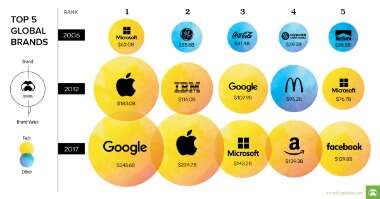
It uses artificial intelligence (AI), machine learning (ML), speech recognition, and other innovative technology to drive fact-based decision-making. The SPDR S&P Kensho New Economies Composite ETF (KOMP, $42.04) is one of six thematic ETFs from S&P Kensho. It seeks to expose investors to innovation trends such as alternative finance, smart borders, cybersecurity and many more. However, where the ETF gets its revenge on its energy stablemate is over the long haul. The Financial Select Sector SPDR ETF has a 10-year annualized return of 9.4%, considerably higher than XLE’s average annual return of 3.5% over the past decade. “This potential recession is the most anticipated in modern history.”

They are traded in stock markets like the New York Stock Exchange (NYSE) under the ticker marker SPY as a unit of investment trust (UIT), closely replicating the S&P 500. SPDR funds differ from mutual funds because shares of SPDR funds are not created for investors at the time of their investment. Instead, SPDRs have a fixed number of shares that are bought and sold on the open market and these shares trade on the exchanges like stock. Mutual fund shares, on the other hand, are created and redeemed by a mutual fund company. Investors can use SPDRs to realize broad diversification to specific portions of the market. For example, the SPDR S&P Dividend ETF is an investment vehicle that seeks to provide investment results that track the total return performance of the S&P High Yield Dividend Aristocrats Index.
MarketWatch
So, companies with low P/E, P/CF, price-to-sales (P/S) and price-to-book (P/B) ratios and those that pay dividends are given a composite value based on the last five years of data. The Financial Select Sector SPDR ETF (XLF, $32.66) is another of the sector funds on this list of SPDR ETFs. XLF tracks the performance of the Financial Select Sector Index, a collection of financial CM Trading stocks within the S&P 500 Index. The energy ETF has 23 holdings, with the top 10 stocks accounting for nearly three-quarters of its $35 billion in total assets. Exxon Mobil (XOM) and Chevron (CVX) make up 42% of XLE, indicating the fund is mostly a bet on Big Oil. The SPDR® S&P 500® ETF is listed on the New York Stock Exchange (NYSE Arca) under ticker symbol SPY.
State Street Global Advisors, which sponsors spiders, has become one of the industry leaders in ETFs. There are now well over 100 SPDR ETFs, with a variety of specializations, including U.S. equities, international equities, fixed income, smart beta, commodities, and real assets. SPDRs trade on the American Stock Exchange (AMEX) under the symbol SPY.
Trusted Providers
The average holding has a price-to-cash flow (P/CF) ratio of 9.3 and a price-to-earnings (P/E) ratio of 13.4. “Crude demand is closely tied to overall GDP growth and so continues to take notes from the general economy.” Given the strength of the labor market, most economists now expect a recession to be short and mild, if one even occurs. And one of the silver linings to a slowing economy, writes Kiplinger economist David Payne in his forecast for gross domestic product (GDP), is a continued decline in inflation. “If inflation does come down as expected, then the Fed might be willing to actually cut interest rates next year,” Payne says.
Is SPDR NYSE Technology ETF (XNTK) a Strong ETF Right Now? – Nasdaq
Is SPDR NYSE Technology ETF (XNTK) a Strong ETF Right Now?.
Posted: Mon, 21 Aug 2023 07:00:00 GMT [source]
The fund tracks the performance of the S&P Kensho New Economies Composite Index, a collection of U.S.-listed companies based in developed and emerging markets that are driving innovation. The index is rebalanced semi-annually on the third Friday in June and December. But not everyone feels the same way, including Warren Buffett, who has long been an advocate of value-based investing. XLE allows investors to gain exposure to companies in the oil & gas industry – whether it be actual producers or equipment and services providers.
Top Holdings
ETFs trade like stocks, are subject to investment risk, fluctuate in market value and may trade at prices above or below the ETFs net asset value. When you buy SPDRs — pronounced spiders — you’re buying shares in a unit investment trust (UIT) that owns a portfolio of stocks included in Standard & Poor’s 500 Index (S&P 500). SPY trades on the stock exchange, so traders can buy or sell their units to or from other market participants. Occasionally, the unit’s price might not reflect the underlying value of the holdings within a unit, because the units are traded on an exchange. Euphoria or fear can cause buyers or sellers to push the price above or below the true value of the underlying holdings.

The SPDR S&P 500 ETF Trust (SPY) has generated an average three-year return of 13.58% as of July 31, 2023. Based on trailing 10-year data, the fund generated average annual returns of 12.52%. Since the inception of the SPDR S&P 500 ETF Trust, the fund achieved average annual returns of 10.01%.
Number of Days Summary
The SPDR S&P 500 is a unit investment trust, which means that SPY must attempt to fully replicate the S&P 500. The managers of the fund purchase and sell stocks to align their holdings with the S&P 500 index. When you buy a share of SPY, you’re buying a unit of the current holdings representing a small portion of each stock in the S&P 500 index. They behave like other stocks; therefore, traders can exercise all traditional stock strategies like short selling, stop losses, limit orders, etc.
- According to Yardeni Research, the S&P 500 financials sector is down 4.8% year-to-date through May 22, second only to energy as the worst-performing sector.
- The price of a share of SPY is intended to be one-tenth that of the S&P 500 Index.
- For investors focused on the long term vs the day-to-day of the market, here are seven of the best SPDR ETFs to buy and hold for at least the next few years.
SPDR ETFs are often easier to invest in than individual stocks, but there is still a risk involved. They tend to be a safer investment option than individual stocks and maintain a lower level of volatility while still offering a return on investment. Due to SPDR’s wide acceptance in the market as one of the popular benchmarks for U.S. financial health, its ETFs are pretty stable and trustable. They are also designed to mimic the top active and listed stocks in the market. The SPY ETF diversifies exposure to the U.S. equity market and is suitable for investors willing to take on a moderate level of risk.
Fund Top Holdings as of Sep 05 2023
The Fund is subject to the risk that geopolitical events will disrupt securities markets and adversely affect global economies and markets. Local, regional or global events such as war, acts of terrorism, the spread of infectious illness or other public health issues, or other events could have a significant impact on the Fund and its investments. State Street Global Advisors’ SPDRs are index funds that began with the launch of the S&P 500 Trust (SPY), which holds the stocks of the S&P 500 Index and is also known as “spiders,” in 1993.
- Will has written professionally for investment and finance publications in both the U.S. and Canada since 2004.
- Holdings and sectors shown are as of the date indicated and are subject to change.
- But not everyone feels the same way, including Warren Buffett, who has long been an advocate of value-based investing.
- SPDRs provide investors with value in much the same way as a mutual fund, but they trade like a common equity.
- When an investor has a long position in the S&P 500 SPDR ETF or to the stock market in general, for example, that investor will make money if the S&P 500 Index goes up.
Investors use the SPDR S&P 500 ETF (SPY) because it provides exposure to a wide range of large U.S. companies with a single purchase. CFI is the official provider of the Capital Markets & Securities Analyst (CMSA)® certification program, designed to transform anyone into a world-class financial analyst. This, of course, tracks https://investmentsanalysis.info/ the S&P 500’s performance with a beta of nearly 1.00. What is important to note is that the SPY ETF, as it fully replicates the index, has a very low relative tracking error—just -0.03% as of July 31, 2023. SPY turned 30 on Jan. 22, 2023, celebrating the milestone by remaining the largest ETF tracking the S&P 500 Index.
